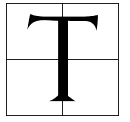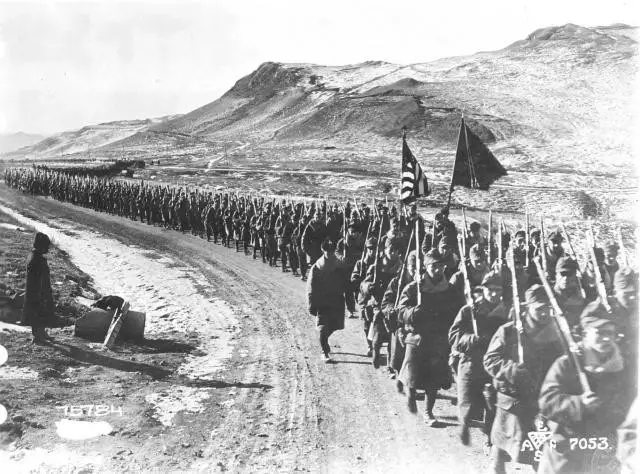 he American and Russian armed forces — rivals for so long — met only once in a direct battle. The Americans and the Soviets fought during the civil war in Russia that followed World War I, when the Americans, along with the Westerners, jumped to the defense of the Whites against the Bolsheviks.
he American and Russian armed forces — rivals for so long — met only once in a direct battle. The Americans and the Soviets fought during the civil war in Russia that followed World War I, when the Americans, along with the Westerners, jumped to the defense of the Whites against the Bolsheviks.
Russia left the theaters of operations of the Great War after signing a separate peace treaty with the Central Powers of Europe. This happened in early March 1918, when the Bolshevik government signed the Brest-Litovsk peace treaty, a treaty with humiliating and extremely harsh terms for Russia.
From 1917 to 1922 the Soviet revolution took place when the monarchy was overthrown by the communist alliance led by Vladimir Lenin. The troops on the communist side were referred to at the time as Bolsheviks, a term used to describe people that follow a Marxist ideology. On the other side, we have the last ruler of the Russian Empire Nicholas II who was commanding the so-called whites (those opposing communism).
The civil war that began during these years in Russia is quite interesting as many other nations took part in trying to save the Russian Empire from being conquered by communism. A big western army that came to help was the U.S. Army which fought against the communists even if these were smaller-scale battles.
Saving the Imperial Russian Army
Shortly afterward, the Western Allies fearing that the collapse of the Eastern Front would affect the success of Western operations against imperial Germany organized an expedition to save the Russian Imperial Army, and quell the Bolshevik revolution.
A British regiment landed at Arkhangelsk, in the far north of Russia, on August 2, 1918. The British occupied the city and turned it into a base for their future operations. A month later, a contingent of American soldiers was sent to fight in Siberia with the British.
French, Belgian, Romanian, Greek, Polish, Canadian, Italian, Japanese, Czechoslovak, Yugoslav, and Australian soldiers also fought in Russia. Some of them were already on the Russian front before the end of March 1918, and others were sent to support the efforts of the imperial army against the new Red Army, the military force of the Bolsheviks.

The Western Allies, therefore, agreed to openly support the White movement in the hope of defeating the Bolsheviks, whose revolution threatened to spread throughout Europe. Over 15,000 U.S. soldiers fought in Eastern Russia against the Bolsheviks. We can say that this is a small preamble to the Cold War although this did take place before the Second World War.
The largest number of foreign divisions that fought in Russia since the beginning of the Great War belonged to the Czechoslovak Legion, made up of Czech and Slovak soldiers who had refused to enlist in the Austro-Hungarian army. With the intensification of the civil conflict, one of the main goals of the Allied expeditions was to rescue about 40,000 members of the Czechoslovak Legion who, at the outbreak of the civil war, had taken control of the Trans-Siberian Railway.

At first, there was a non-aggression pact between the Bolsheviks and the Czechoslovak soldiers, but after 1918, foreign soldiers became actively involved in the civil war between the Whites and the Reds (communists).
The Polar Bear Expedition
The American contingent stationed in Arkhangelsk to help the British was nicknamed the “Polar Bear Expedition” — obviously due to its position near the Arctic Circle. Arctic weather also contributed to the nickname, as the soldiers faced extremely low temperatures. The purpose of the Anglo-Americans was to make their way to the Czechoslovak soldiers to encircle them. Another goal in mind — but one that was completely implausible — was to rebuild the Eastern Front with the help of Czechoslovakians and soldiers loyal to the Russian Empire.
The Anglo-American forces clashed with the Red Army soldiers on two fronts, one along the Dvina River and one along the Vologda Railway. For six weeks, the Allies managed to gain ground in the face of enemies, but the fronts were too long and proved difficult to supply. In addition, the battlefield — the vast Russian plains — did not match the trench warfare in Europe from World War I. Under these conditions, the Americans found it difficult to defend the front line and enemy raids began to jeopardize their supply routes.
Then came winter, and the Allies tried to adopt a defensive tactic but failed to mobilize the local population against the Bolsheviks. Meanwhile, they launched an offensive on the Dvina River and gained ground in front of the Allies, who were forced to retreat.
Shortly afterward, thousands of miles away, Germany capitulated. The Great War ended, but foreign soldiers fighting on the side of the Whites found themselves still embroiled in conflict — and one that was no longer theirs. The American soldiers began to demand their return home, and tensions among them increased when, due to the weather, the port of Arkhangelsk froze and postponed their departure.
The American troops had to wait for spring to come in order to go back home. Finally, in May 1919, 4,000 British volunteers were sent to their aid. The American contingent was evacuated along with the rest of the Allied soldiers stationed in northern Russia, thus ending their intervention in the Civil War.
According to a report in October 1919, about 210 American soldiers died in Russia — at least 110 died in battle, 30 were declared missing, and 70 died of disease (in 90% of cases, Spanish flu). Of the soldiers of the Polar Bear Expedition, 305 were wounded. The repatriation of the remains of American soldiers killed in Russia was a long and exhausting process due to the complicated diplomatic relations between the United States and the Soviet Union, especially in the first years after the conflict.
Many people think that these two great powers that ruled the world during the Cold War era never had an actual armed conflict where people were killed, but as you can see this took place 30 years before the beginning of the Cold War.
Avid Writer with invaluable knowledge of Humanity!
Upcoming historian with over 30 million views online.
“You make your own life.”





